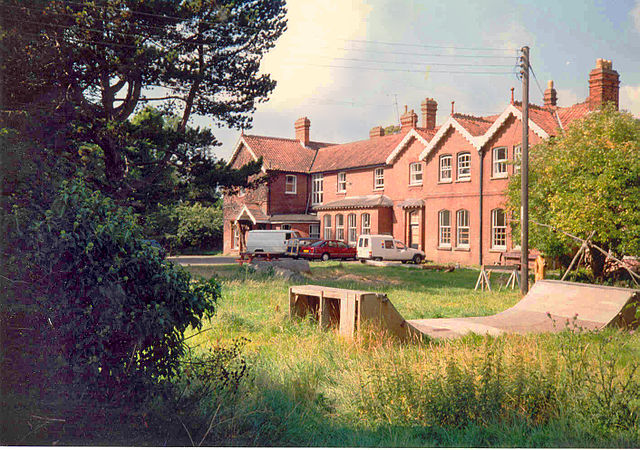This book, just to give a bit of background, was written over thirty years ago by Christopher Alexander and his research colleagues. It outlines the patterns of human life, and how these are designed for in our built environment, from the large-scale community planning to the details of a window or feature in a building. The book was inspiration for Rob Hopkins, who applied the same kind of structure in the "ingredients" concept of The Transition Companion.
The book is a catalogue (a dictionary, to follow the "language" metaphor) of patterns of human life, and how spaces are or may be formed to serve those patterns. More about what a pattern is is explained in The Timeless Way of Building (again by Christopher Alexander); a great book, but not essential reading. In essence, a pattern is an observation of something that benefits human well-being, and the book will then discuss some of the issues and then comes to a practical conclusion. Here's a summarised example of one such "pattern":
TEEN-AGE SOCIETY
Teenage is the time of passage between childhood and adulthood. In traditional societies, this passage is accompanied by rites which suit the psychological demands of the transition. But in modern society the "high school" fails entirely to provide this passage.
The most striking traditional example we know comes from an east African tribe. In order to become a man, a boy of this tribe embarks on a two year journey, which includes a series of more and more difficult tasks...
In modern society, the transition cannot be so direct or simple... Every culture that has an adolescent period has also a complicated adolescent problem... high rates of delinquency, school dropout, teenage suicide...
Therefore:
Replace the "high school" with an institution which is actually a model of adult society, in which the students take on most of the responsibility for learning and social life, with clearly defined roles and forms of discipline. Provide adult guidance, both for the learning, and the social structure of the society; but keep them, as far as feasible, in the hands of the students.
 |
| Summerhill School in Suffolk, famous for its democratic governance by the children |
So, the book is essentially about human well-being centric design. That is, to provide environments that are healthy, sociable, educational and positively participatory. These are the social goods that are being strived for in the book (although it doesn't mention them specifically!). Designing in line with natural psychological tendencies (by designing places that we feel happy and comfortable in), rather than against our human instincts (designing places that require huge, brash advertising to persuade you to do something that you don't actually want to do anyway) is a key element in this and is just one of many links to Transition principles that naturally comes out of this well-being centric thought process.
In the next couple of days, I will be blogging further on some specific patterns from the book, and how our built environment shapes the lives we lead (and consequentially how sustainably we live)!
This book is one that I recommend everyone to have a copy of on their bookshelf - it's well worth its $65 cover price (although you can pick up a copy on Amazon for £32).
Image of Summerhill School from Wikimedia Commons.








@ Simeon, have you read the quite resent essay by Michael Mehaffy and Nikos Salingaros:
ReplyDelete- The Pattern Technology of Christopher Alexander:
http://www.metropolismag.com/pov/20111007/the-pattern-technology-of-christopher-alexander
I will recommend reading this whole 10-part series in Metropolis Magazine:
http://www.metropolismag.com/pov/author/nikos
I have myself written an article about the introductionary book to the Pattern language, The Timeless Way of Building:
http://permaculture.org.au/2011/06/17/the-timeless-way-of-building/
Wow, you're giving me quite a reading list! Thanks though, it's all good stuff! :)
ReplyDeleteHi Simeon,
ReplyDeleteI shall put that book on my essential reading list.
R.E excerpt about teenagers: I have for some time been thinking about the lack of ritual in the west and how something needs to be redeveloped for our teenagers, I have run a few workshops and games with young people where a sense of initiation takes place, often by working outside with tree's and stories. Each time, I have noted the positive impact on the group having under gone a sort of 'transitioning' moment alongside the sense of sudden unity it creates for the whole group. I wish there were more opportunities to develop fun, supportive and inquiring rites of passage for our young people,
Tom